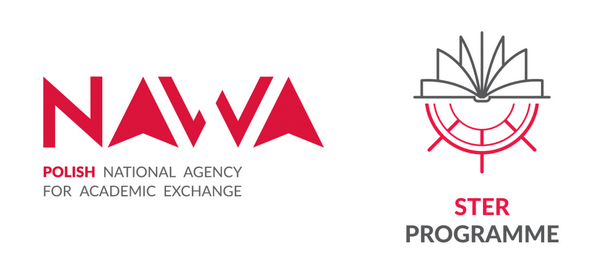1. New catalysts for producing hydrogen
1.1. Typical systems for water electrolysis produce hydrogen on cathode and oxygen on anode. The cathodic hydrogen evolution process has been well developed, whereas the oxygen evolution reaction poses many practical obstacles, mainly resulting from high voltage (low energy efficiency) and the hazard of H2-O2 mixture explosion. In this regard, nowadays conducted research are focused on the development of technology for manufacturing the electrodes (anodes) intended for electrolyzers producing hydrogen. The most important component of the electrode is the catalyst of a low toxicity, low costs, earth abundance and a suitable electronic band structure. The resulting electrode should be inexpensive, compact, durable and facile to mass produce. Such approach enables to reduce the building and operating costs of the electrolyzers. Alternatively, water oxidation might be substituted by ammonia oxidation resulting in a more safe processing due to nitrogen evolution on anode instead of oxygen. The ammonia oxidation reaction should consume less electric energy than water oxidation. However, the development of ammonia electrooxidation technology is also hindered by the lack of efficient catalysts.
1.2. Nature of the research: theoretical, experimental.
1.3. Keywords: hydrogen production, water oxidation, ammonia oxidation, hydrogen economy, electrocatalysis, electrodes, catalysts
2. Metal organic frameworks (MOFs) for photocatalytic pollutants degradation and CO2 photoconversion
2.1. One of the most important aims of the long-term EU strategy is achieving a net-zero-greenhouse emission economy. The anthropogenic emissions of CO2 is draws particular attention, therefore CO2 capture and usage is an important option to mitigate CO2 emissions. Overcoming past barriers in the CO2 conversion into valuable chemicals using solar energy would bring us closer to theses challenging goals. The development in CO2 photoconversion processes could be stimulated by new photochemical composite materials, as well as, applying of highly porous materials to pre-concentrate the CO2. In this regard, metal organic frameworks (MOFs), possessing high specific surface area, controllable pore sizes are attractive materials for CO2 conversion through chemical fixation and photocatalytic transformation. Additional modification of MOFs by ionic liquids should increase CO2 adsorption capacity of the photocatalyst surface, resulting in enhanced yield of CO2 photoconversion.
2.2. Nature of the research: theoretical, experimental.
2.3. Keywords: metal organic frameworks, CO2 photoconversion, CO2 separation, functional materials, metal organic frameworks/ ionic liquids hybrid materials
3. Design and engineering of high -performance photocatalytic systems
3.1. Photocatalytic process, whereby light is applied for activation of semiconductor material is a promising and complementary technology for treatment of air and water streams at ambient conditions. Photocatalysis is a advanced technology for degradation of persistent organic pollutants that are not prone to biological degradation, and particularly when they are present at low concentrations or in diluted systems. New photoreactors with a potential for implementation in industrial practice are an essential element of process development. As far as using photocatalysis for advanced treatment is concerned, it is not only important that the radiation source effectively excites the semiconductor particles but also that it does not generate excessive costs. Therefore, novel photoreactor design solutions with an emphasis on the illumination of the reaction system are highly desired. There is also a need for gaining a better understanding of the effects of process indicators on the efficiency of pollutant degradation, for elucidating the reaction kinetics with the view to optimizing the photocatalytic process.
3.2. Nature of the research: theoretical, experimental.
3.3. Keywords: photocatalysis, advanced oxidation processes, photoreactor, optimization
4. Application of enzymatic catalysis in the pretreatment of biomass
4.1. Effective enzymatic hydrolysis aims to release simple sugars from crystalline cellulose and hemicellulose. The efficiency of this type of pretreatment prior to fermentation processes is crucial for the efficiency of the conversion of biomass to the desired products. The conversion of cellulose is catalyzed by cellulases and can be carried out using enzymes such as endoglucanases, exoglucanases, and glycosidases. Conversion of hemicellulose requires the use of endoxylanase and β-xylosidase, α-glucuronidase, α-arabinofuranosidase and acetyloxylate esterase. The main source of commercial cellulase preparations are filamentous fungi and their cellulolytic strains. Research is being carried out on the formulation and optimization of the process parameters for the use and recovery of enzymes, and the development of a microbial consortium to promote enzymatic degradation of lignocellulose.
4.2. Nature of the research: theoretical, experimental.
4.3. Keywords: enzymatic treatment; filamentous fungi; pre-treatment; biomass; cellulose; hemicellulose
5. Catalysts for petrochemical industry and resource recovery
5.1. The research area includes a developing new catalysts for hydrogen, syngas and synthetic fuels generation from conventional as well as unconventional sources. The research concerns the developing new catalytic materials along with detailed physicochemical characteristics based on the newest technologies and methods The considered raw materials for hydrogen, syngas and synthetic fuels production are conventional fuels, biofuels and waste products from various industries. The conducted research is a response to the growing costs of processing energy raw materials and the production of synthetic fuels, especially in the times of the global energy crisis. The conducted research also covers new types of reactors for the production of hydrocarbons as well as specific apparatus for final product purification. The research is conducted and financed as part of the implementation of national and international research grants and in cooperation with industrial partners and foreign centers.
5.2. Nature of research: experimental theoretical, technology development
5.3. Keywords: catalysts, reforming, synthetic fuels, methanol, waste plastics


